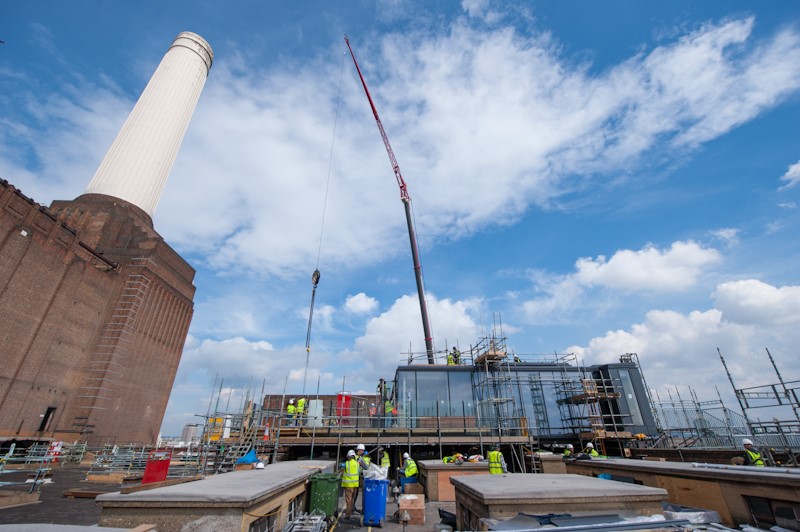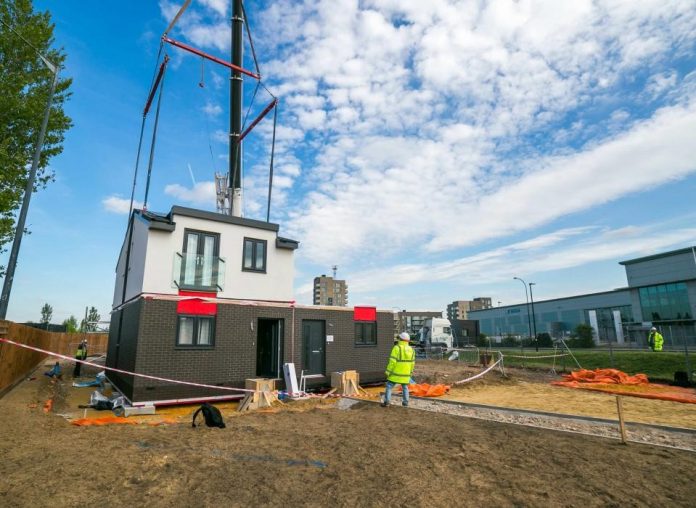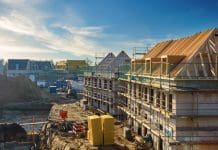Dennis Seal of Buildoffsite looks at issues and opportunities facing the offsite sector, as well as the growing support for this method of construction in meeting the UK’s housing demand
How many times recently have you heard the words “at least that’s what we are led to believe”? Surely, we, the housing sector, can do better than regurgitate others’ opinions, and are we not better taking ownership of what it is that we do and say?
Have you sat down this week and pondered which came first, the chicken or the egg? It’s probably very unlikely you will have given it a second thought unless, that is, you are trying to unravel the mysteries of the offsite housing sector and how it can be incorporated into your next project.
Current issues facing the offsite sector
In the case of offsite housing solutions, the complexity of the question generates a similar complex conundrum as does the chicken/egg scenario.
Clients are slow to engage with the offsite sector because of concerns with continuity of supply and surety of delivery, whereas manufacturers and suppliers are slow to invest and increase supply due to a lack of volume and the perceived lack of continuity of orders from clients.
Both have issues around cost of supply as this depends on volume, continuity and quality, which, by default, is all too readily measured against the performance of traditional construction and not measured on specific offsite solutions designed into the delivery process from day one.
What can we do to create a strong and robust offsite solution for housing?
Key to creating strong and robust offsite housing solutions is ownership and collaboration. Whether you are the client or the supplier/manufacturer, there is a need to take control and lead the whole process, not just elements of it.
If possible, it is important that ownership is maintained from the project’s inception phase through its development phase and operational phase. Unlike housing for sale (where interest in the property is sold to the purchaser), some tenures like affordable, build to rent, older person and student accommodation make it easier to consider the whole-life approach.
Recently there has been a lot of reference to the “German model” as this is indicative of a trend towards more renters than buyers. The UK focus on Help to Buy could be foolhardy given that we are beginning to see a decline in sales outside of the capital and Build to Rent could be a better solution, especially as it’s happening now and is a market on the up.
Where are the opportunities for offsite?
As was evident from Buildoffsite’s recent Residential Hub meeting in Liverpool, there is an abundance of opportunity in the area for market sale and in the affordable sector for the use of offsite solutions.
Companies such as L&G, Berkeley Homes, Countryside and Ilke Homes are looking towards their own offsite factories to assist them in meeting a percentage of their annual build targets. Laing O’Rourke is looking to supply and others such as Crest, Willmott Dixon and Kier are engaging with suppliers and manufacturers to achieve theirs.
There is an over-dependency on government support to launch schemes early (using infrastructure investment) or build them (using grant or acceleration funding), which have been complicated by Right to Buy issues and uncertainty over future spend priority, especially if directed away from housing to other sectors (such as health). The government mustn’t shy away from its responsibility to build more homes. It must continue to build on its achievements to date and commit more to is housing budgets going forward.
There is a compelling argument that better housing could lead to a reduction in the demands placed on the health service; the King’s Fund and National Housing Federation Report out now on housing and health says the cost of poor housing to the NHS is £1.4bn per year.

What are the benefits of improved housing?
It would be a shame to see the country’s housing programme suffer just as it was getting back on its feet and starting to make some serious inroads into increasing housing supply (the official figures were 217,000 homes pa last year – at least that’s what we are led to believe).
The actual level of new homes constructed last year was nearer 183,000 homes pa. This is a subject that will be debated at length at the next Buildoffsite Residential Hub meeting titled Homebuilders 2020 (Who are the players and innovators). The event is on 13 September in Bristol.
Liverpool taught us that the scale of development was relative to market opportunity and while there were numerous challenges, we could see a clear market emerging for Build to Rent and older persons’ accommodation; both key tenures that could prove vital to future housing need and delivery models as we progress and navigate our way towards higher annual build out rate targets (latest reports suggest 340,000 homes nationally pa are required).
Dennis Seal, chair of Buildoffsite’s Residential Hub, said: “The theme of ‘height of design’ fitted in well with future development proposals within the city and the emerging market opportunity that medium to high-rise development created.
“The event raised a number of issues, especially during the panel debate, which as always focused on what’s new in Liverpool and what support is required in the area to achieve housing growth. We are looking forward to continuing that debate and focusing on how output can be significantly increased to meet the government’s targets at our next event in Bristol in September.”
How sustainable is the long-term housing market and is building to rent the answer?
Uncertainties over the sustainability of the long-term housing for sale market has yet to surface outside of London. This is a market that needs to be stable and at full capacity if we are going to see any significant growth in housing supply beyond 2020.
Independent reports, such as Sir Oliver Letwin’s publication of the draft Independent Review of Build-Out, which came out on 25 June 2018, and his final report, which is due out later this year, may provide some of the answers as to how future housing delivery can be increased, perhaps on the back of smaller parcels of land and additional affordable and other tenure solutions.
Buildoffsite, a not-for-profit organisation, has been working with the offsite sector for more than 15 years – via its Residential Hub – its aim is to demystify, promote and enable wider use of offsite housing throughout the UK. Through a carefully structured programme of events around Procurement (Cambridge in March 2018), Enabling Housing Delivery (Newcastle in April 2018) and Height of Design (Liverpool in July 2018), the Residential Hub has been working hard to inform and support the sector. (See the Buildoffsite website for a line-up of future events).
Support for the offsite sector has grown considerably over the past 12 months and at a disproportionate rate compared to previous years, where growth was being achieved at a steady, if at times frustrating, pace. Buildoffsite, working with its members from all walks of the industry, is helping the sector to understand its attributes and limitations at the same time as enabling both the public and private sectors to enter the market not only well prepared and well informed but also with a network of like-minded organisations who can support them in the process.
Dennis Seal
Buildoffsite
Tel: +44 (0)20 7549 3306
Twitter: @buildoffsite
LinkedIn: Buildoffsite











![[VIDEO] NHBC brings together sector leaders at Affordable Housing Innovators event NHBC, the UK’s largest new homes warranty and insurance provider, recently hosted the first Affordable Housing Innovators event in partnership with the British Property Federation](https://www.pbctoday.co.uk/news/wp-content/uploads/2025/02/iStock-184846177-1-218x150.jpg)


